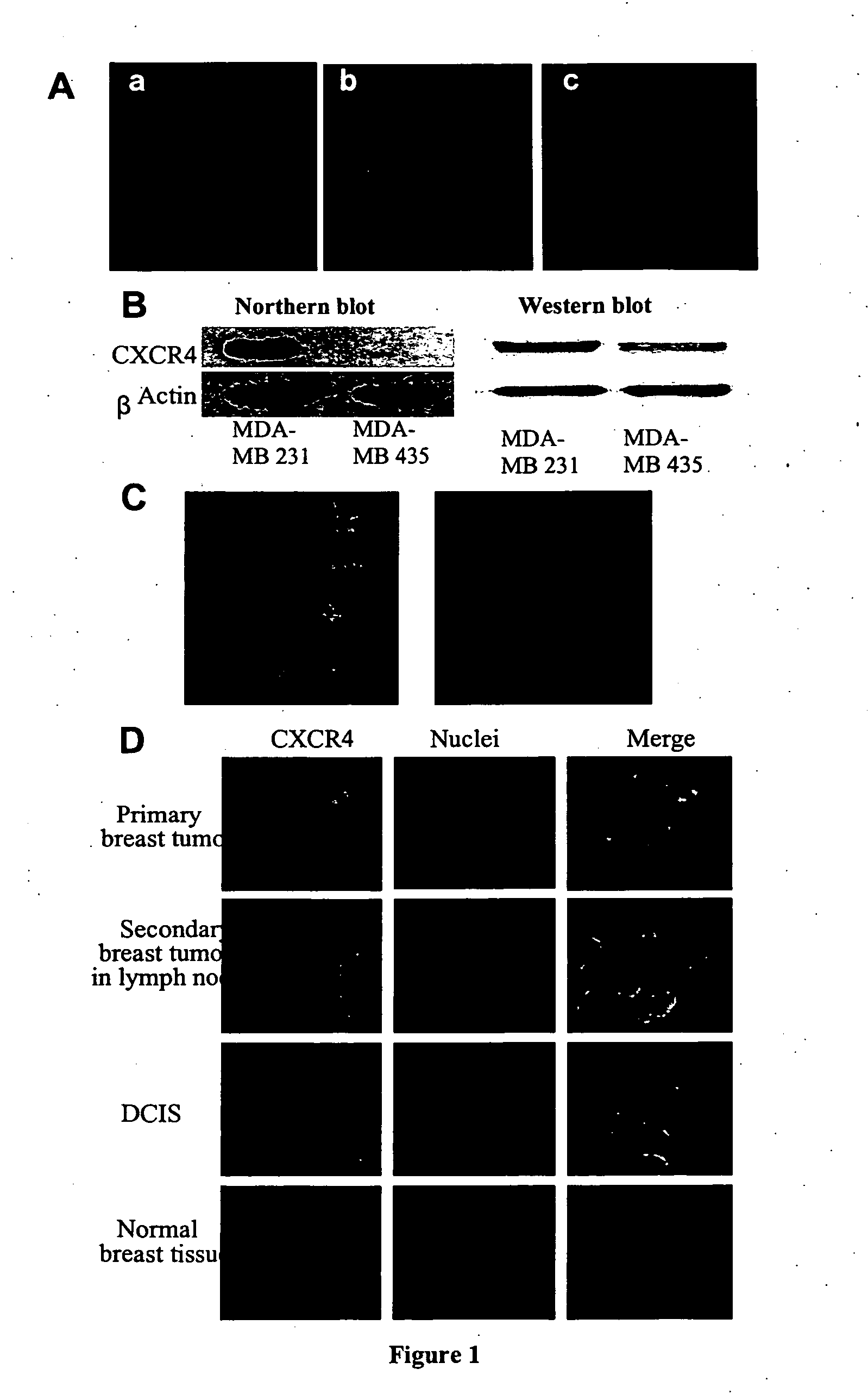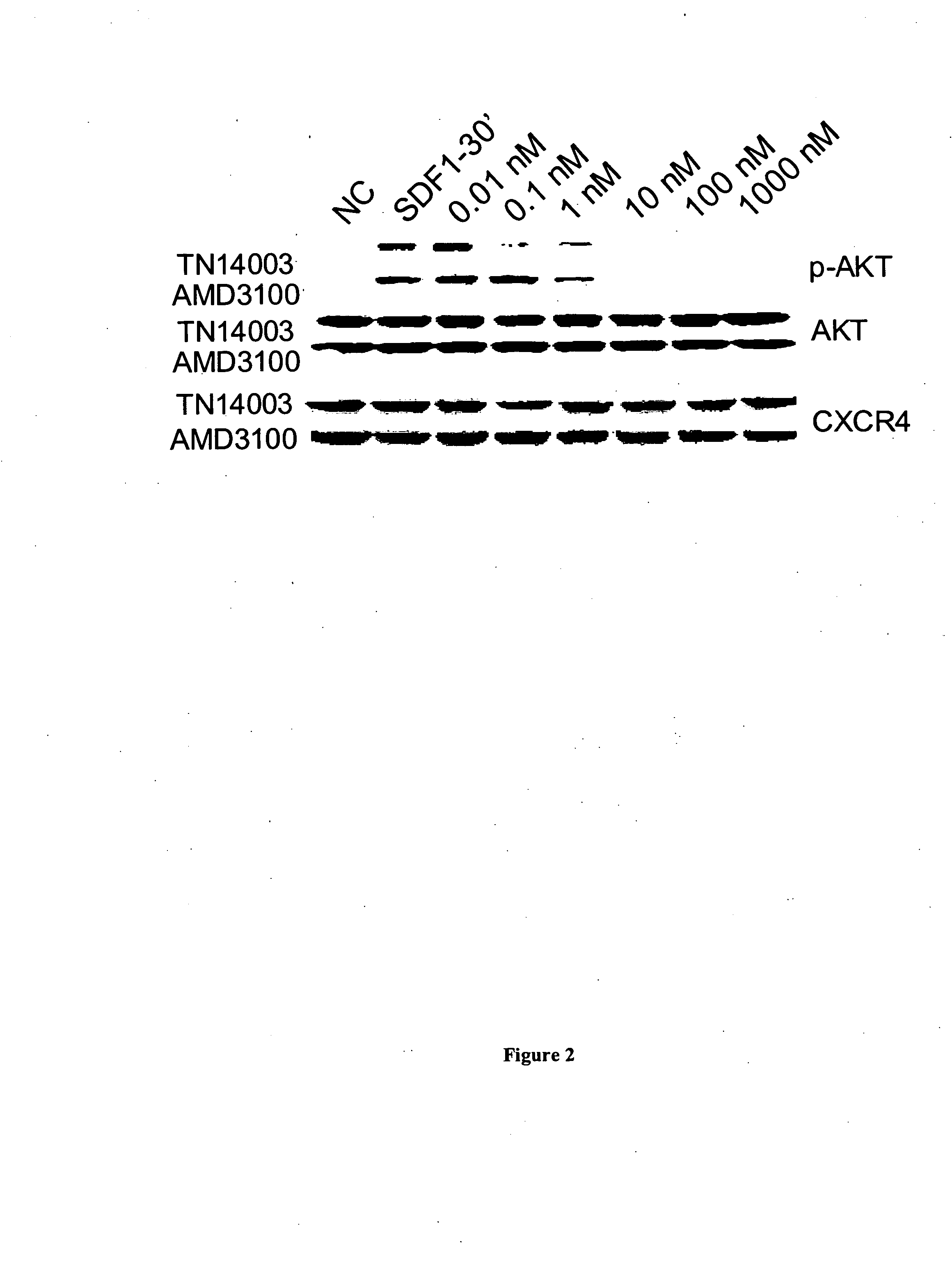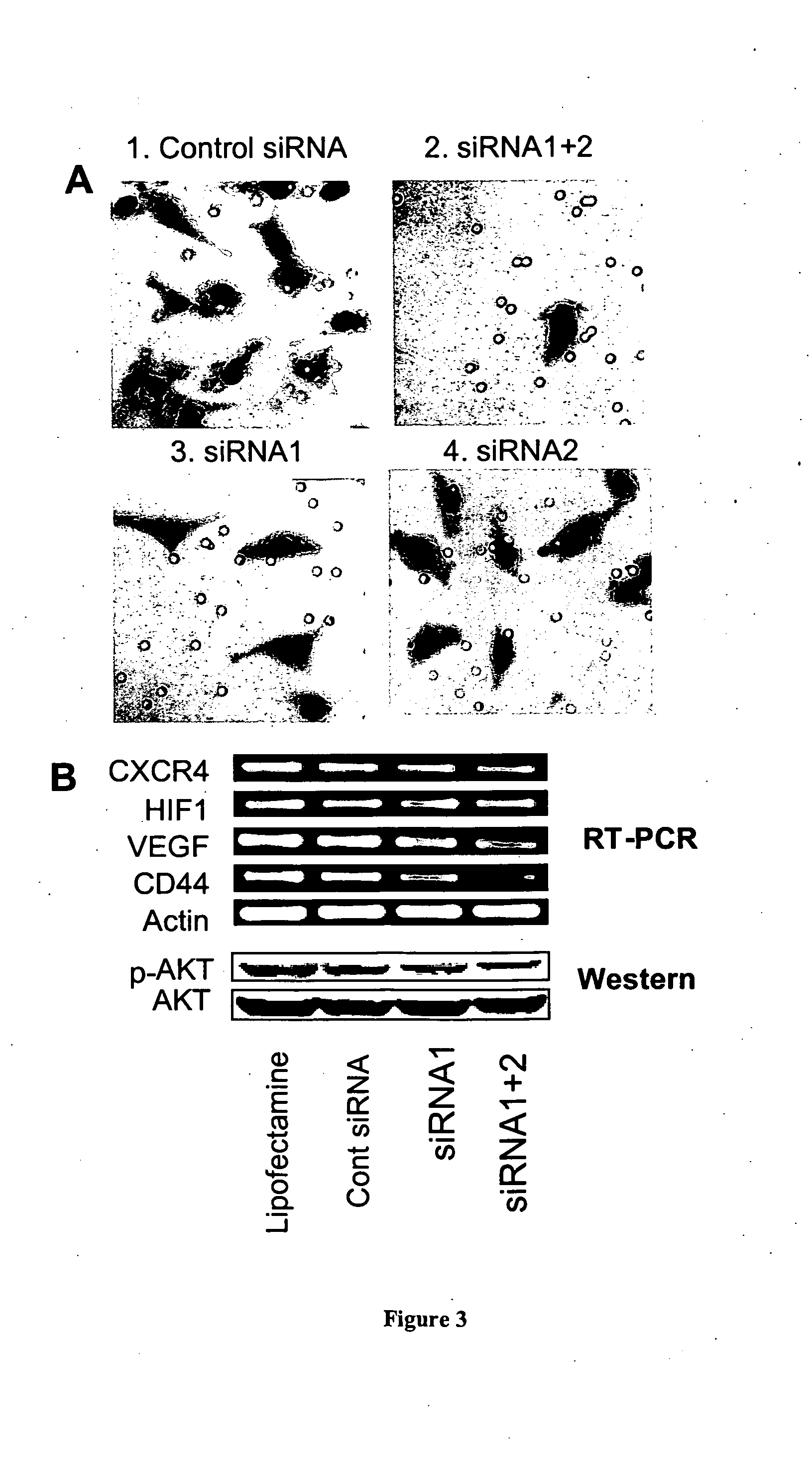CXCR4 antagonists for the treatment of medical disorders
a technology of cxcr4 and antagonists, applied in the field of cxcr4 antagonists for the treatment of medical disorders, to achieve the effect of reducing the incidence of metastasis
- Summary
- Abstract
- Description
- Claims
- Application Information
AI Technical Summary
Benefits of technology
Problems solved by technology
Method used
Image
Examples
example 1
Peptide-Based CXCR4 Antagonist, TN14003, is a Novel-Imaging Probe Specific for CXCR4
[0207] Initially, experiments were performed to verify that TN14003 binds to the predicted SDF-1 binding sites on the CXCR4 receptor. In these studies, MDA-MB-231 cells were incubated in the absence (FIGS. 1A, B) or presence (FIGS. 1A, C) of 400 ng / ml of SDF-1α for 10 min, and then fixed in ice-cold acetone. Immunofluorescence of the biotin-labeled TN14003 was negative in both membrane and cytosol in the cells pretreated with SDF-1α for 10 min (FIGS. 1A, C).
[0208] The utility of the biotinylated TN14003 as a probe of CXCR4 was explored coupled with immunofluorescence staining of cultured breast cancer cells and paraffin-embedded tissues from breast cancer patients. MDA-MB-231 had high levels of mRNA and protein for CXCR4 as shown by Northern blots and Western blots relative to MDA-MB-435 (FIG. 1B). When the biotinylated TN14003 was used to stain the two cell types, the high CXCR4-expressing MDA-MD-...
example 2
TN14003 is a More Potent Inhibitor of CXCR4-Associated Signaling than AMD3100
[0210] CXCR4 / SDF-1 interaction activates PI3K / Akt and Ras / Raf / MEK / Erk pathways in a Gαi protein (PTX-sensitive)-dependent manner. Experiments were conducted to determine the effect of blocking CXCR4 / SDF-1 interaction by either TN14003 or AMD3100 at different concentrations (0, 0.01, 0.1, 1, 10, 100, 1000 nM) on phosphorylations of Akt and Erk1 / 2 signaling. Incubating cells with 100 ng / ml of SDF-1 for 30 minutes activated Akt. Akt activation was blocked by either sub-nano molar concentration of TN14003 or a few nano molar AMD3100 (FIG. 2). Erk1 / 2 phsophorylation was attenuated in the presence of sub-nano molar concentration of TN14003 or 100 nM AMD3100 (data not shown). However, the increase in Erk1 / 2 phosphorylation by SDF-1 was not significant as the increase in Akt phosphorylation. The results demonstrate that TN14003 is more potent than AMD3100 in inhibiting CXCR4-mediated signaling. Treating cells with...
example 3
Knock Down of CXCR4 by siRNA Blocks Metstasis in the Lung
[0211] RNA interference technology, silencing targeted genes in mammalian cells, has become a powerful tool for studying gene function. Two different siRNA duplexes of CXCR4 (Genbank Accession no. NM—003467), siRNA1 (sense, 5′-UAAAAUCUUCCUGCCCACCdTdT-3′) and siRNA2 (sense, 5′-GGAAGCUGUUGGCUGAAAAdTdT-3′) were designed and purchased from Dharmacon (Lafayette, Colo.). The non-specific control siRNA duplexes were purchased from Dhamacon with the same GC content as CXCR4 siRNAs (42%, D001206-10).
[0212] Lowering CXCR4 mRNA levels by siRNAs inhibited CXCR4 / SDF-1-mediated invasion as measured by a matrigel invasion assay. The CXCR4 ligand, SDF-1 (400 ng / ml) was added to the lower chamber to attract CXCR4-positive breast cancer cells to migrate through the matrigel. The invasion of MDA-MB-231 cells transfected with siRNA1 decreased to 39±4% of the control cells, 51±8% with siRNA2, and only 16±6% with both siRNA1+2 (FIG. 3A). FIG. 3B ...
PUM
| Property | Measurement | Unit |
|---|---|---|
| Temperature | aaaaa | aaaaa |
| Power | aaaaa | aaaaa |
| Structure | aaaaa | aaaaa |
Abstract
Description
Claims
Application Information
 Login to View More
Login to View More - R&D
- Intellectual Property
- Life Sciences
- Materials
- Tech Scout
- Unparalleled Data Quality
- Higher Quality Content
- 60% Fewer Hallucinations
Browse by: Latest US Patents, China's latest patents, Technical Efficacy Thesaurus, Application Domain, Technology Topic, Popular Technical Reports.
© 2025 PatSnap. All rights reserved.Legal|Privacy policy|Modern Slavery Act Transparency Statement|Sitemap|About US| Contact US: help@patsnap.com



